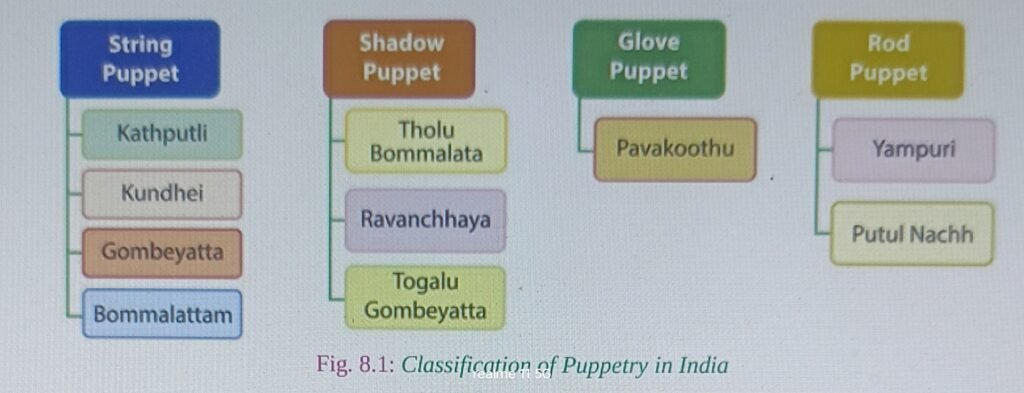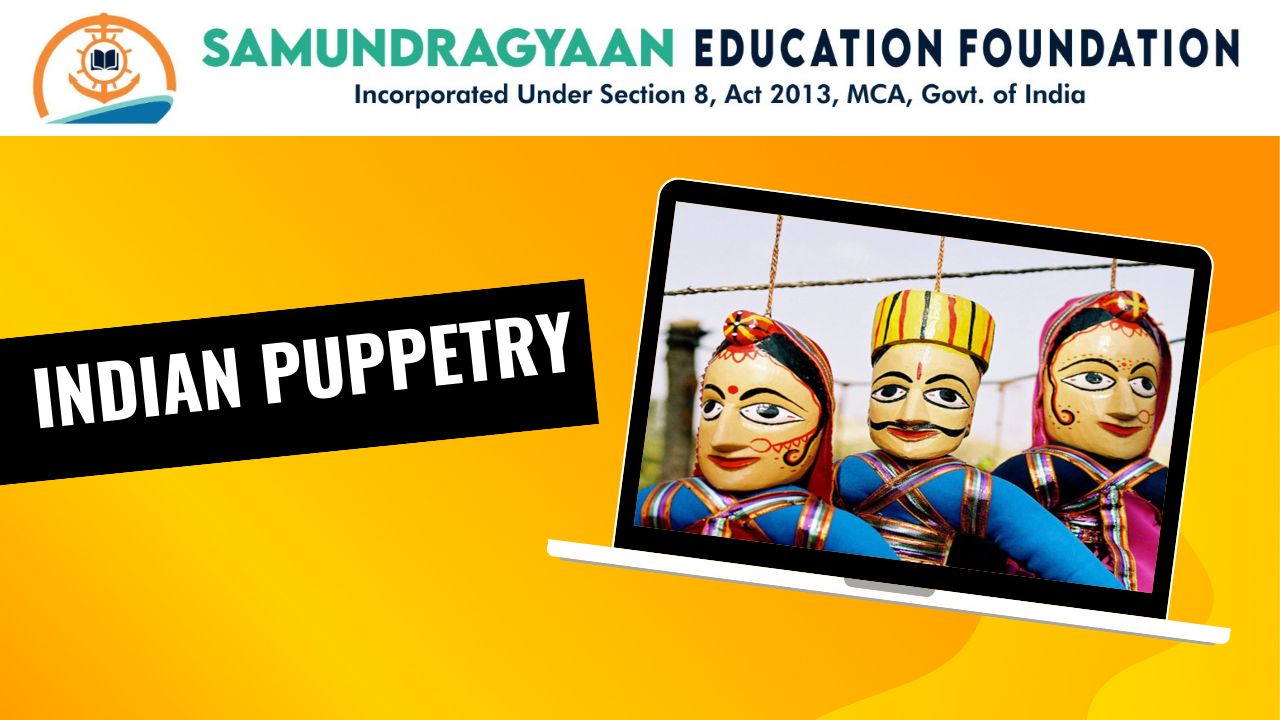Indian Puppetry
Introduction
- Ancient Art Form: Puppetry is one of the ancient forms of entertainment.
- Captivating Experience: The element of a puppet being controlled by a master makes it a captivating experience.
- Cost-Effective: The low cost of animation and production of a performance makes puppetry popular among freelance artists.
- Artistic Freedom: This form of entertainment provides unrestricted freedom to the artist in design, color, and movement.
- Ingenious Invention: Puppetry is considered one of the most ingenious inventions of mankind.
Indian Origin
- Historical Significance:
- Puppetry has long been of interest in India for both entertainment and educational purposes.
- Excavation sites at Harappa and Mohenjo-daro have yielded puppets with sockets, indicating the presence of puppetry as an art form during those times.
- References to marionette theatre date back to around 500 BC.
- Written references to puppetry are found in the Tamil classic Silappadikaram (1st and 2nd century BC) and the Mahabharata.
- Philosophical Importance:
- In the Bhagavad Geeta, God is described as a puppeteer controlling the universe with three strings: Satta, Raja, and Tama.
- In Indian theatre, the narrator is called Sutradhar, or the ‘holder of strings’.
- Cultural and Artistic Diversity:
- Various puppetry traditions have developed across India, each with distinct forms of puppets.
- Stories from mythology, folklore, and local legends are commonly adopted.
- Puppetry incorporates elements of painting, sculpture, music, dance, and drama, creating a unique artistic expression.
- Challenges:
- The lack of a devoted audience and financial insecurity has led to a decline in the art form in modern times.
- Categories of Puppetry in India:
- Puppetry in India can be broadly classified into four categories.
A brief outline of each with some prominent examples are given as follows:

String Puppets
- Features of String Puppets:
- Miniature Figures: The puppets are generally eight to nine inch miniature figures chiselled out of wood.
- Painting: Oil paint is used to initially paint the wood and add facial features such as eyes, lips, and nose.
- Limb Creation: Small wooden pipes are created with the body to form the limbs.
- Dressing: The body is covered with colorful miniature dresses that are stitched.
- Accessories: Miniature jewelry and other accessories are attached to give it a lifelike feel.
- String Control: Strings are attached to small holes in the hands, head, and back of the body, which are then controlled by the puppeteer.
- Popular Examples of String Puppetry in India:
- Kathputli: Traditional string puppetry from Rajasthan.
- Bommalattam: Puppet shows from Tamil Nadu.
- Gombeyatta: String puppetry from Karnataka.
- Kundhei: Marionettes from Odisha.
Kathputli
-
- Name Origin: Derived from ‘kath’ meaning wood and ‘putli’ meaning doll.
- Appearance: Puppets are covered in bright traditional Rajasthani dress.
- Music: Shows are accompanied by dramatic folk music.
- Unique Feature: Puppets lack legs.
- String Attachment: Strings are attached to the fingers of the puppeteer.
Kundhei
-
- Origin: String puppets of Odisha.
- Material: Made of light wood.
- Appearance: Dressed in long skirts.
- Flexibility: Puppets have more joints, providing the puppeteer with greater flexibility.
- String Attachment: Strings are attached to a triangular prop.
- Cultural Influence: Shows exhibit a marked influence of Odissi dance.
Gombeyatta
- Traditional Puppet Show of Karnataka:
- Styling and Design: Based on various characters of the Yakshagana Theatres.
- Unique Feature: Utilizes more than one puppeteer to manipulate the puppets.
Bommalattam
-
- Region: Indigenous to Tamil Nadu.
- Combination of Techniques: Combines features of rod and string puppetry.
- String Attachment: Strings are attached to an iron ring worn by the puppeteer on the head.
- Size and Weight: Bommalattam puppets are the largest and heaviest marionettes in India, with some as large as 4.5 ft in height and weighing up to 10 kg.
- Theatre Stages: Bommalattam theatre has four distinct stages:
- Vinayak Puja
- Komali
- Amanattam
- Pusenkanattam
Shadow Puppetry in India:
-
- Rich Tradition: Shadow puppetry has a long and enduring tradition in India.
- Material: Puppets are flat figures cut out of leather.
- Painting: Figures are painted identically on both sides of the leather.
- Performance Setup: Puppets are placed on a white screen with light falling from behind, creating a shadow on the screen.
- Manipulation: Figures are manipulated to create telling imagery through silhouettes on the blank screen.
- Popular Examples of Shadow Puppetry:
- Tholu Bommalata: Andhra Pradesh.
- Togalu Gombeyata: Karnataka.
- Ravanchhaya: Odisha.
- Tholpavakoothu: Kerala.




